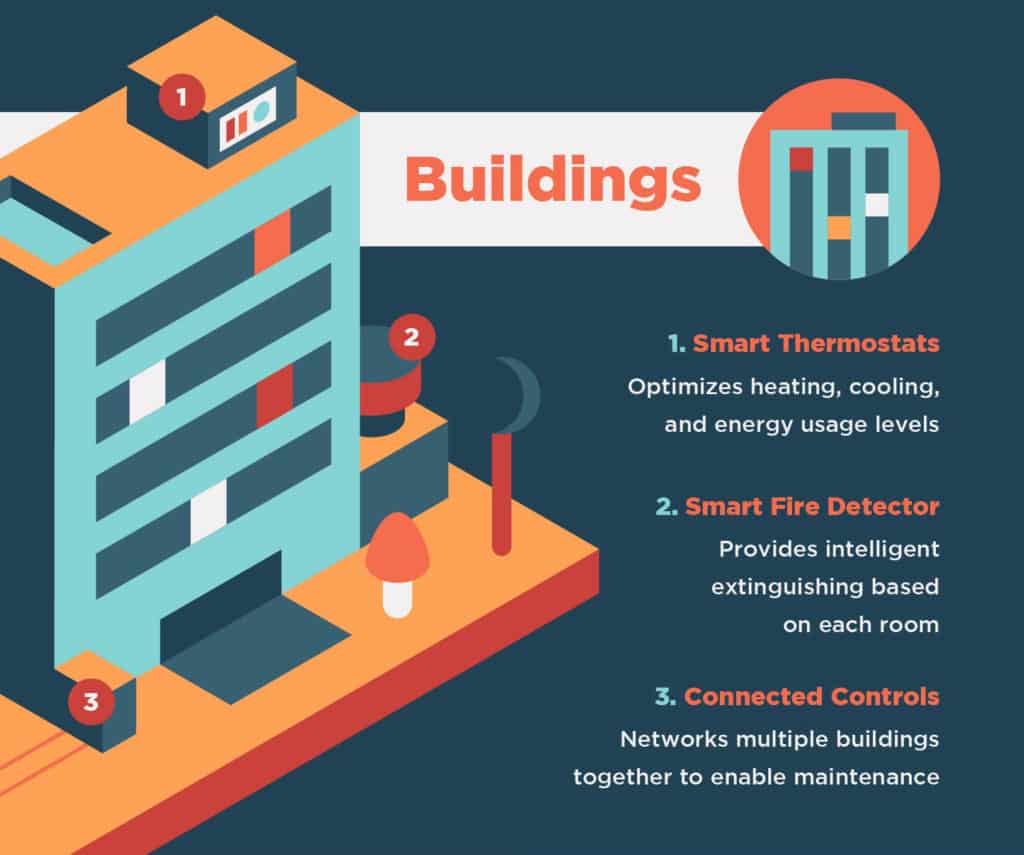What Makes a Smart City in 2019?
What Makes a Smart City in 2019?
- Last Updated: December 2, 2024
Guest Writer
- Last Updated: December 2, 2024



To improve urban living and to optimize their resources, cities are folding internet-connected devices into streetlights, municipal infrastructure, parking meters, and more, composing what could be called the "technological" portion of a smart city. Working with big-name developers and up-and-coming startups, smart cities are using the Internet of Things (IoT) to improve the quality of life for their citizens.

Image Credit: BigRentz
IoT is expected to become the standard of living in cities. Read on to learn more about what makes a smart city in 2019 and how cities are benefiting from IoT.
#SmartCities are hubs that route #IoT-produced #Data through public-private partnerships to solve real problems. In 2019, cities are getting smarter.
What Makes a City “Smart”?
Smart cities use intelligent solutions to optimize infrastructure and smart and responsive governance to engage citizens in the management of their city. A system of sensors, networks, and applications collect useful data, like traffic congestion, energy use, and CO2 levels. This data is used by the municipality to improve a city, including its transportation, buildings, utilities, environment, infrastructure, and public services.
Anatomy of a Smart City

Image Credit: BigRentz
These IoT-driven cities monitor their urban landscape and communicate that data to both the government and the citizens in order to create a more efficient and sustainable space. Here are some of the most prevalent and innovative IoT features.
1. Smart Transportation and Mobility

Image Credit: BigRentz
Traffic is one of the most prevalent concerns in cities. Congestion on the streets and highways not only leads to accidents but also to an excessive amount of CO2 emissions. To improve traffic flow, smart cities are implementing features like congestion sensors to divert vehicles, and smart parking meters to show available parking spots to drivers and to reduce driving and idling time.
London has improved its CO2 input through transportation. The city reduces 70,000 cars on the road daily by blocking off central business areas to cars and by using cameras to charge drivers who drive in these areas. Copenhagen is another smart city that encourages alternative forms of transportation—they implement GPS-powered traffic lights that favor cyclists, decreasing overall travel time by 17 percent.
2. Autonomous Buildings

Image Credit: BigRentz
Buildings are central to our everyday activities, but they also consume considerable energy. Cities like Singapore are looking to change this with innovative IoT-powered cooling systems. These devices optimize heating, cooling, and energy usage levels based on the activity of each room, saving up to 32 percent on HVAC costs. Similarly, Seattle uses smart analytics systems to reduce emissions for 45 percent of their city buildings.
3. Streamlined And Responsive Utilities

Image Credit: BigRentz
Water and electricity are central to our way of living, but they are often poorly managed. Using IoT, smart cities are monitoring energy use and adapting it to every situation. San Diego saves $250,000 in electricity costs per year with lights that only brighten as vehicles or pedestrians approach. A smart grid is another example of a resource-efficient IoT solution. The technology can analyze energy consumption citywide and deliver only the optimal supply needed to each household.
Cities are also using sensors to detect any leaks outside tanks and pipes, and they're handing water management over to their citizens. New York City saved more than $73 million in water costs by allowing citizens to monitor their water use through automated meter readings.
4. Environmental Harmony

Image Credit: BigRentz
Considering our increased awareness of sustainability and global warming, smart cities use IoT to lower their carbon footprint. From filling their buildings with greenery to improving weather response planning, cities can monitor their pollution and CO2 levels. For example, Beijing has reduced deadly airborne pollutants by 20 percent by tracking the sources of their pollution—mainly construction and traffic—and by redirecting those sources accordingly.
5. Dynamic And Adaptive Infrastructure

Image Credit: BigRentz
Smart cities are improving their infrastructure by ensuring the stability of their buildings and roads. Innovations such as earth detectors can monitor areas and structures that are more prone to tremors, allowing the city to prepare and proof their infrastructure. Cities like Philadelphia and Seoul are also using IoT to keep more cars off the road and to lower waste collection. Seoul, for example, has reduced waste collection by 83 percent by installing smart waste bins around the city.
6. Public Engagement And Security

Image Credit: BigRentz
Finally, smart cities in 2019 seek to improve the lives of their citizens. Whether that’s using connected cameras to help emergency responders or allowing users to communicate with the city through WiFi and wearables, smart cities increase the comfort, safety, and livelihoods of the people living in them.
Chicago is a strong example. The city has reduced violent crime by 14 percent every year using predictive crime heat maps to aid police efforts. Rio de Janeiro has improved the response time of emergency services by 30 percent using a system of connected video feeds.
An Urban Modernity
So, what is a smart city? Smart cities are interconnected hubs that coordinate IoT and the resulting data through public-private partnerships to solve real problems. From cutting down energy use to improving traffic conditions, smart cities improve the long-term health and the lives of urban residents worldwide.
Written by Lior Zitzman, Director of Digital Audience at BigRentz. This article was originally published here by BigRentz.
The Most Comprehensive IoT Newsletter for Enterprises
Showcasing the highest-quality content, resources, news, and insights from the world of the Internet of Things. Subscribe to remain informed and up-to-date.
New Podcast Episode

What is Software-Defined Connectivity?
Related Articles




